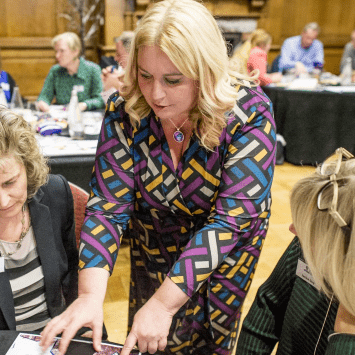Posted in Blog, Facilitation, Innovation, Lead Your Team, Sustainability by Jo North
Your Business Sustainability Workshop
In this article, I share my tried and tested tips and techniques for facilitating a successful business sustainability workshop. This includes ideas, strategies, tools, agenda and more.
In other blogs, such as these here on Sustainable Business Model Innovation, and Green Innovation for Your Business, I’ve delved into why sustainability in business is now more important than ever before.
Hopefully you’re here because you want to drive improved sustainability performance in your own business, or because you want to help your clients to do so.
It’s essential that sustainability becomes part of the DNA of your innovation culture. The way to achieve this is to proactively involve people from all areas of the organization in thinking about sustainable practices, and in helping to create practical action plans that make a real difference.
Your business sustainability workshop will be a great opportunity to engage people from across the business in achieving a step change in your results.
What Is a Business Sustainability Workshop?
A business sustainability workshop is a focused session aimed at creating a solid action plan for making your business more sustainable. Whether you’re a business leader, facilitator, or stakeholder, this workshop can benefit you. It gathers employees, potential experts, and maybe even external consultants to discuss current practices, identify areas for improvement, and plan strategies that align with your environmental, social, and economic goals.
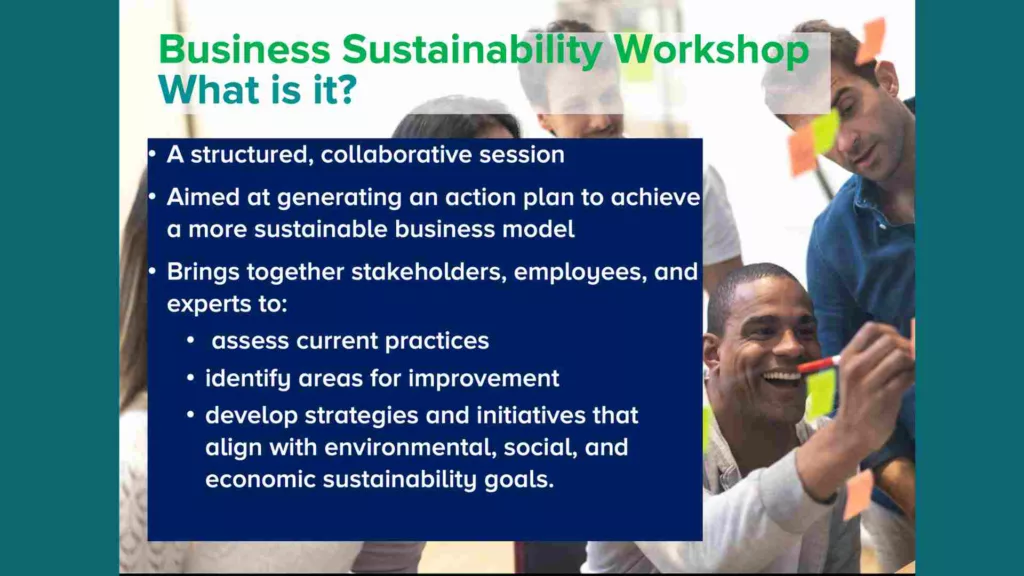
Why Business Sustainability Matters
Sustainability isn’t just a buzzword; it’s a necessary framework for long-term success. Companies focusing on not just profit, but also people and planet, are outperforming their profit-only peers. They attract and retain talent, please customers, and contribute to global challenges like climate change.
There’s plenty of evidence to support this, such as this Deloitte report here on the Sustainable Consumer.
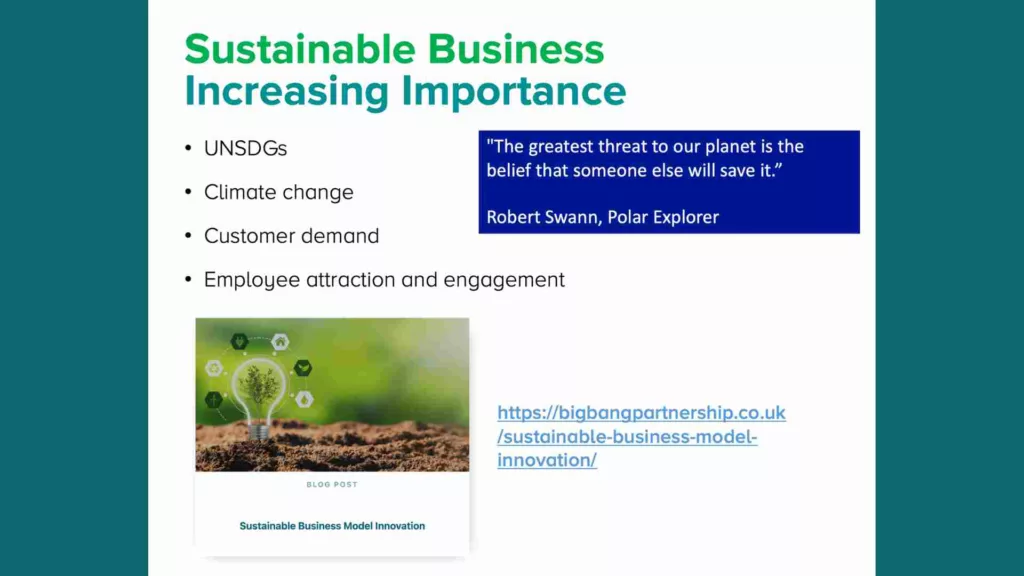
When to Conduct a Business Sustainability Workshop
Thinking about your first comprehensive sustainability strategy? Or perhaps you need to revitalize an existing one? Maybe there’s a change in regulation, or you’re eyeing more sustainable supply chain management. A business sustainability workshop can address these and more.
You may even want to do a deep dive into a specific sustainability-related topic, such as:
- Energy efficiency
- Climate action
- Waste reduction
- Product lifecycle assessment
- Sustainable procurement
The tips here in my article will help you with all of these.
If you’re wondering where to start, have a look at the United Nations Sustainable Development Goals, also known as UNSDGs, or the Doughnut Economics Model to identify which of the several areas of sustainability your business can impact the most.
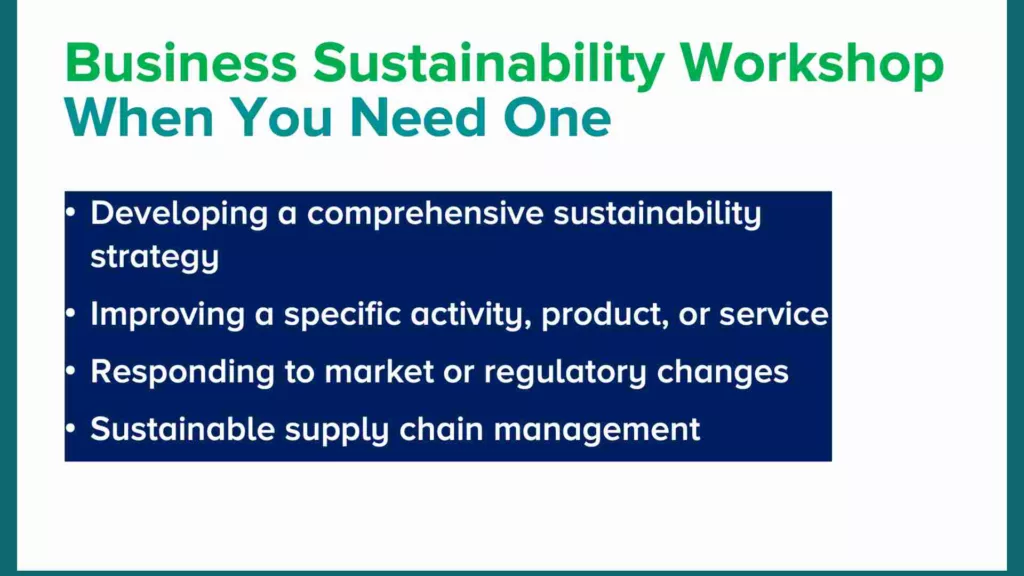
Materiality and Your Sustainability Focus
It’s essential that your business sustainability plans focus on those areas where you can make the most meaningful, positive impact.
In the context of sustainability strategy, materiality refers to the identification and prioritization of environmental, social, and governance (ESG) issues that have a significant impact on your organization’s performance, and are of utmost importance to its stakeholders.
Keeping this in mind will help you to make sure that your sustainability initiatives align with both your operational goals and stakeholder expectations.
It’s important that focus of your workshop is on a topic that is of material importance to your business and your stakeholders.
If you’d like to explore the idea of materiality in your sustainability strategy, along with other themes to help you become more innovative, resilient and successful, I recommend the recently-published Sustainable Business Handbook, by David Grayson, Chris Coulter and Mark Lee.
Preparing for Your Workshop
Here are the key actions to take when preparing for your business sustainability workshop.
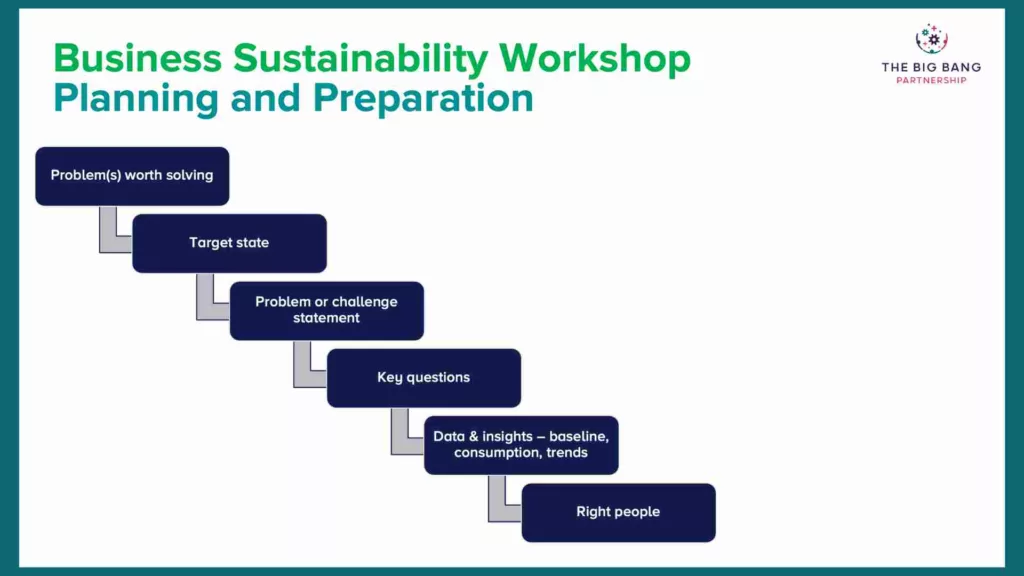
Set Your Scope
Begin by determining the key questions you want the workshop to address. It’s essential to remain focused and avoid trying to tackle too much. This allows for in-depth exploration of chosen topics rather than a shallow overview of many.
Gather Relevant Sustainability Data
Good data drives better decisions. If your aim is to reduce your carbon footprint, you first need to understand your current footprint. This means analyzing current consumption levels, like energy and water, and understanding trends. Share this data with participants beforehand. It sets the stage and gives them something to reflect on before the workshop.
Relevant data will also help you to benchmark and track the success of the actions you put in place as a result of your business sustainability workshop.
Remember, always focus on what matters most. You don’t need reams and reams of detailed stuff. Select fewer key data points that give you meaningful insight on what will help you move forward. Think progress over perfection. Too much data can be paralyzing rather than mobilizing.
If you don’t have good data available, consider what you need to do to begin collecting it now, to help you in the future.
Engage the Right People
Every successful workshop involves the right participants. Ensure you invite those who can contribute meaningful insights and drive actionable outcomes. Don’t just make this a leadership event. Be inclusive for higher, cross-business engagement and greater diversity of perspectives.
Choose Sustainable Materials
Sustainability shouldn’t just be the topic of the workshop; you should reflect it in your implementation. Think about the resources you’ll use. Opt for sustainable options like recycled paper and recyclable resources. Consider digital alternatives to reduce waste. For interactive sessions, use resources like old magazines, newspapers, and discarded items for creativity-driven activities such as junk modeling, vision board collages and other warm up activities.
Apply the 6Rs to your workshop planning. These are:
- Rethink
- Reduce
- Reuse
- Recycle
- Repair
- Repurpose
Business Sustainability Workshop Agenda
The agenda for your business sustainability workshop needs to include:
- Introduction, workshop purpose and scene setting and challenge statement
- Warm up or icebreaker
- Lightning talks
- ‘How might we…?’ questions
- Ideation (idea generation) activities
- Idea selection and development
- Action planning
- Review, next steps and close

Introduction, Workshop Purpose, Scene-Setting & Challenge Statement
Start with an introduction. Clearly define the session’s purpose and the organization’s current sustainability stance. Follow this with explaining your challenge or problem statement to focus discussions.
Lightning Talks
To set the tone, consider incorporating lightning talks. Unlike lengthy presentations, these are brief, focused talks that provide essential information or inspiration. You can invite external experts or internal data-savvy individuals to share insights.
Lightning talks are a maximum of 10-15 minutes long. They focus on inspirational, informative, helpful information specifically related to your sprint or workshop. The purpose of lightning talks is to give your participants a good base of information, against which they can innovate productively. Take a look at my more detailed guide to lightning talks here.
Lightning Talk Suggestions
Here are some ideas for lightning talks for your business sustainability workshop. Can you just pick one of these, or have two or three.
- Someone from outside the business, or from a different business unit, who is ahead of you on their sustainability journey could talk about their experiences and what they have learned on the way.
- Subject matter experts from within your business could share data and insights on the sustainability challenges you want to tackle.
- External experts could be invited in to give explainers on key sustainability concepts and principles, as well as case study examples, to level up people’s knowledge and inspire them.
‘How Might We…?’ Questions
Dive into the main activity by posing “How Might We…?” questions. These prompt participants to ideate solutions for the main challenge you’ve set. Encourage participants to break down broad questions into more specific, actionable ones. For instance, if you’re discussing carbon footprint / GHG reduction, break it down into specific themes such as:
- Gas
- Electricity
- Vehicle transport emissions
- Other fuel
- Waste to landfill
- Water use
- Purchased goods and services
- Staff travel
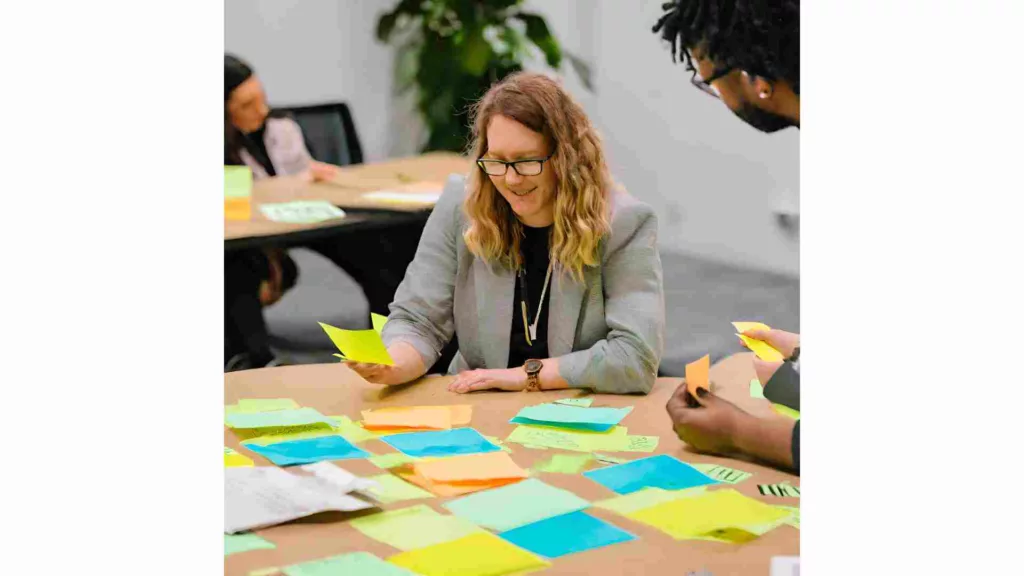
Ideation (Idea Generation)
Use tools and concepts as prompts for idea generation in your business sustainability workshop.
Here are some sustainability-specific ideation options to select from.
1. Circular Economy
I highlighted the distinctions between a linear and a circular economy in my article here on Sustainable Business Model Innovation and my video below.
Embracing circularity implies considering the end-of-life phase of any item we purchase, use, or produce. The goal is to ensure minimal to no waste. Items should ideally be reused, repaired, recycled, or repurposed, thereby significantly reducing waste. By using the principles of circularity as a jumping-off point, your participants can deconstruct and reevaluate the entire process of production, distribution, and consumption processes for your business.
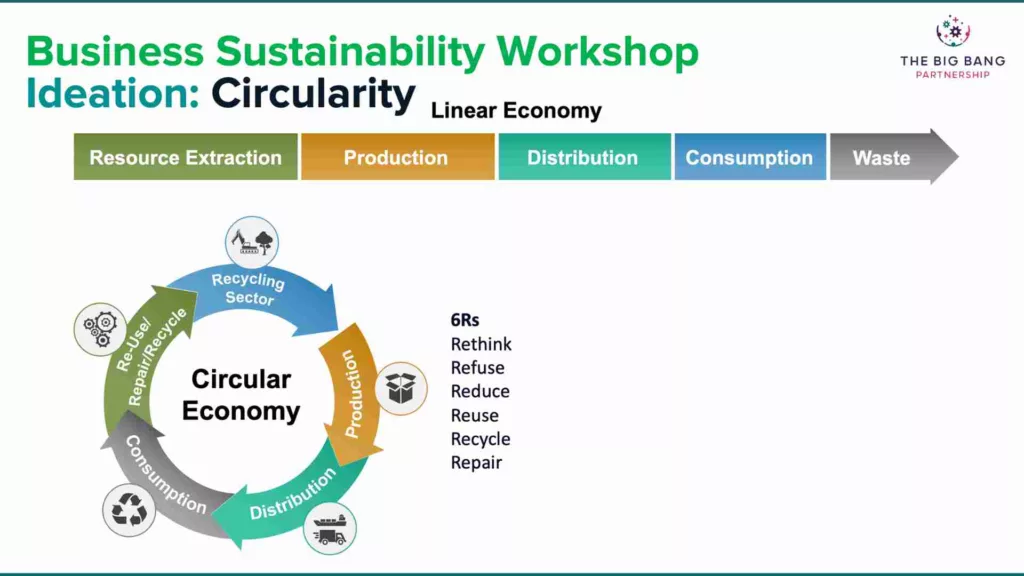
2. Product / Service Journey Mapping
The product or service journey mapping technique excels as a brainstorming tool in your business sustainability workshop. Participants begin by placing themselves in the position of your product or service. They examine its lifecycle, starting even before its inception—whether it’s a purchase, a transformation, or an assembly.
Deep Dive into Every Phase
Ask your delegates to engage deeply with each phase. They should consider sustainable practices at every turn: energy consumption, waste reduction, and minimizing transportation. Also ask them to reflect on storage solutions and delivery to customers, scrutinizing aspects like packaging and assembly.
Focus on People
It’s essential to consider the human element. Ask your participants to ponder the experiences of those who interact with your product or service. They should ask themeselves: How can we enhance their journey? What measures can we implement to support them?
Full-Circle Thinking
A thorough product or service journey review spans its entire life, from creation to disposal. Pivotal insights often emerge when pondering the end-of-life phase. Exploring the circular nature of products will generate a wealth of actionable ideas to drive your sustainability goals.
3. SCAMPER
SCAMPER is a classic ideation tool that can be used in all kinds of situations, including for your sustainability workshop. I’ve written a detailed guide about SCAMPER and how to facilitate it here.
I recently used SCAMPER when I facilitated a series of energy efficiency workshops in the maritime industry, and it worked a treat. Do check SCAMPER out if you’ve not used it before.
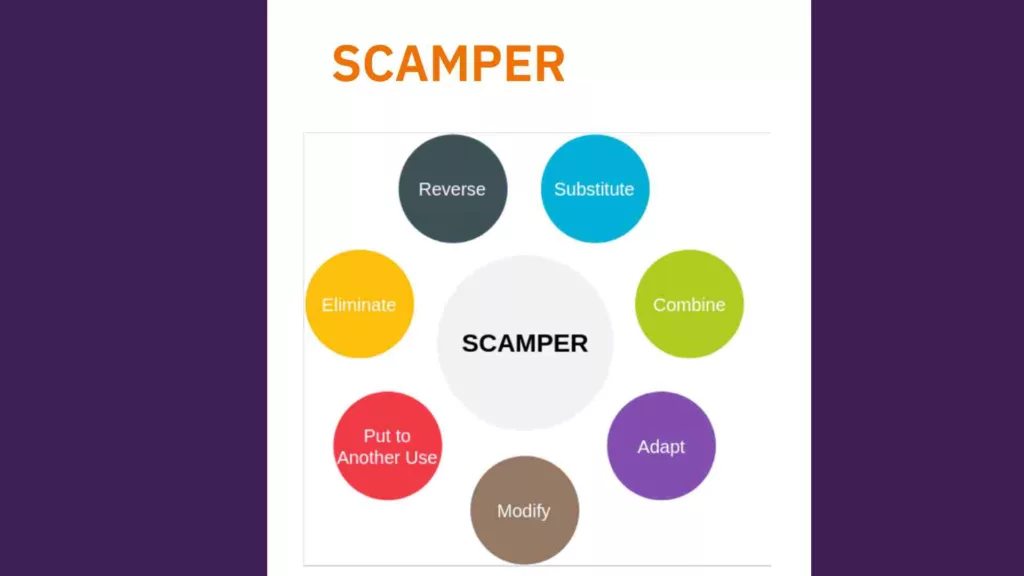
4. Lean Thinking: The Deadly Wastes
Focusing on minimizing waste is a surefire way to help improve your sustainable business practices. Simplicity often holds the key to effective change. In your sustainability journey, you can draw inspiration from Lean thinking, a philosophy focused on waste reduction, efficiency maximization, and consistent quality. A valuable component of Lean thinking is the “Deadly Wastes” model, which can serve as a useful ideation tool.
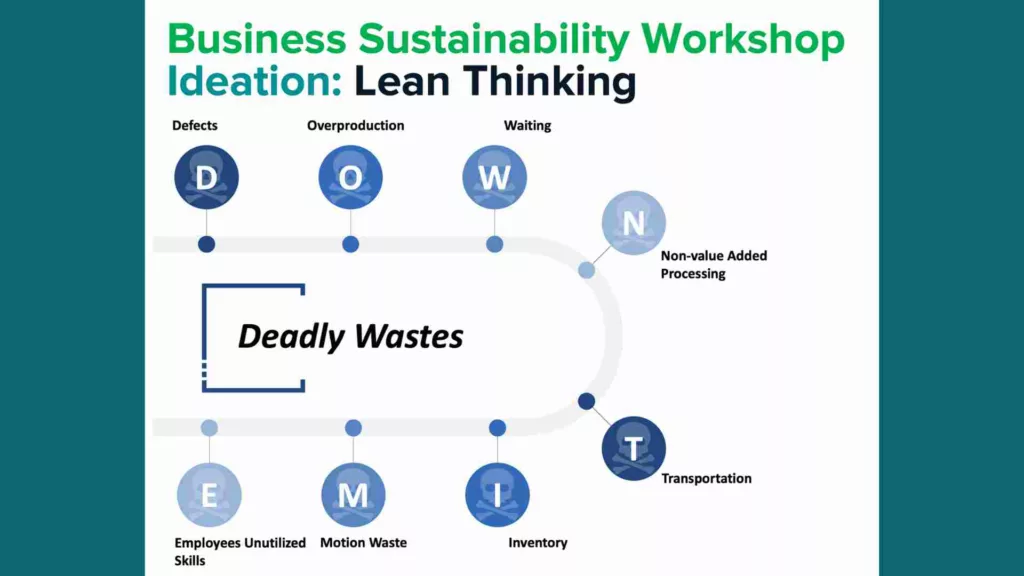
How to Use the Deadly Wastes Model in Your Business Sustainability Workshop
Work through each of the letters in the Deadly Wastes’ ‘DOWNTIME’ acronym in turn, as follows:
D for Defects
Start by examining defects in your processes. How can you minimize them? Reducing defects not only improves quality but also minimizes waste.
O for Overproduction
Overproduction is a common source of waste. Are you making more than necessary? Streamlining production can significantly reduce waste.
W for Waiting
Waiting between stages is wasteful. Identify areas where unnecessary waiting occurs and consider how to eliminate or reduce it.
N for Non-Value-Added Processing
Unnecessary processes can add waste. Examine activities that don’t contribute positively to your product or service. Streamlining such tasks is essential.
T for Transportation
Transporting goods or materials can generate waste. Minimize unnecessary movements and find efficient transportation solutions to cut down on waste.
I for Inventory
Excess inventory consumes space, energy, and cash. Keep only what’s essential and reduce unnecessary stock.
M for Motion Waste
Motion waste is about moving things needlessly. Look for areas where items are shifted without adding value and optimize these processes.
E for Employees and Underutilized Talent
Tap into the knowledge and ideas of your workforce. Your team, suppliers, and partners often have valuable insights. Encouraging their participation can lead to innovative and sustainable solutions.
By incorporating the Deadly Wastes ‘DOWNTIME’ framework, you can prompt discussions that result in sustainable improvements in your processes and operations.
5. What if…? Scenarios
Thinking outside the box is a valuable approach to enhancing sustainability. Consider creating some “What If” scenarios for your delegates to use to come up with some fresh and practical ideas.

You’ll need to create “What If” scenarios appropriate for your workshop, but here are some examples to get you started:
What If We Embraced Solar Energy?
Imagine if your business were powered by solar energy. How would this change your operations and environmental impact?
What If Tidal Energy Became Our Source?
Exploring tidal energy offers a different perspective. How could harnessing tides impact your sustainability efforts?
What If Hydrogen Became Our Energy Source?
Hydrogen is a versatile energy option. What if you incorporated it into your operations, reducing your carbon footprint?
What If We Promoted Walking to Work?
Encouraging employees to walk to work can have a positive impact on both health and the environment. How might this change your workplace culture and sustainability goals?
What If We Eliminated Packaging?
Consider a scenario where your products are sold without packaging. How would this influence waste reduction and sustainability?
While these scenarios might not all be practical or achievable, they serve as idea generators. By asking these questions, you can uncover innovative and sustainable solutions that fit your specific circumstances and goals.
6. Recognizing the Power of Behavior
In the realm of sustainability, behavior plays a pivotal role in shaping our ecological impact. It’s not just about our actions but the choices we make daily. Here, we delve into the importance of identifying values and evolving behaviors to foster a more sustainable future.
Sustainability hinges on how we conduct ourselves, individually and collectively. By understanding this fundamental aspect, you can instigate meaningful change in your business.

Identifying Behaviors to Transform
A key step in this process is pinpointing the behaviors your participants wish to alter or enhance. These may encompass minor adjustments, such as turning off lights or opting for eco-friendly commuting options like trains or bicycles. The scope varies, but every behavior counts.
Change and Growth
The ideal focus isn’t limited to changing behaviors; we also emphasize building upon existing positive ones. Recognizing and nurturing what’s already working can be a potent motivator. When we concentrate on what we excel at, our enthusiasm and determination naturally soar. Research demonstrates that our attention shapes our actions, and by spotlighting our strengths, we are likely to engage more proactively. Remember to ask your workshop delegates to think about building on positive behaviors, as well as changing the not-so-positive ones.
Idea Selection and Development
Embarking on a journey towards sustainability involves more than a big bunch of ideas; it needs a well-thought-out plan tailored to your unique needs. Here are my tips for selecting, adapting, and prioritizing actions to create a meaningful impact.
1. Cherry-Picking the Right Ideas
In a sea of sustainability initiatives, it’s crucial to recognize that you don’t need to implement them all. Instead, focus on cherry-picking the ideas that align most closely with your goals and circumstances.
2. Embrace Adaptability
Flexibility is your ally. Don’t hesitate to adapt and customize your ideas to fit your specific context. Tailoring them ensures they’re an ideal match for your organization.
3. Find Synergy
Consider synergies between different sustainability actions. Combining ideas can often yield a more potent result than tackling them in isolation.
4. Avoid Overload
A common pitfall is trying to do everything at once. The challenge lies in finding balance. Juggling too many initiatives simultaneously will dilute your impact.
5. Quick Wins and Long-Term Gains
Distinguish between quick wins and major projects. Quick wins offer immediate results with minimal effort. Major projects require more time, planning, and sometimes investment, but promise substantial long-term benefits.
6. Prioritize Materiality
Materiality refers to the significance of an action concerning its impact, not just financially but also in terms of broader sustainability. Prioritize actions that promise the greatest return on effort and investment. You can use a 2×2 impact / effort grid to help sort and prioritize all the ideas from your business sustainability workshop.

7. Transition from Idea to Action
The journey towards sustainability doesn’t end with brilliant ideas; it starts there. To transform your innovative concepts into actionable initiatives, create an ‘idea canvas’ and ask your delegates to complete these steps for each idea:
1. Catchy Title: Setting the Stage
Each idea should have a catchy title, capturing its essence and purpose succinctly.
2. Target and Problem Solving
Define what your idea targets and the problem it addresses from a sustainability perspective. This clarity ensures that your actions have a meaningful impact.
3. Elevator Pitch: Conveying Impact
Prepare a brief elevator pitch, summarizing your idea’s significance. This ensures that you can articulate its value concisely.
4. Solution Details: The Way Forward
Dive into the specifics of your proposed solution. Describe how you intend to bring your idea to life.
5. Costs and Benefits: A Dual Perspective
Estimate the costs associated with your sustainability initiative, but don’t forget the benefits. These benefits extend beyond financial gains and can include enhanced sustainability and business performance.
6. Transparent Communication
Honesty and transparency are vital when communicating your sustainable efforts. Avoid ‘greenwashing’ – be values-driven and authentic in your messaging.
7. Customer Engagement
Inform your customers about the positive changes you’re making. This open communication not only builds customer loyalty but also boosts sales.
8. Efficiency and Cost Savings
Sustainability isn’t just about spending; it’s about working smarter. Efficient, sustainable practices can lead to cost savings, making your business more economically sound.
9. Action Plan and Follow-Through
With your ideas mapped out and clear to all stakeholders, you can develop an action plan and follow through effectively. This systematic approach ensures that your sustainability initiatives become a reality.
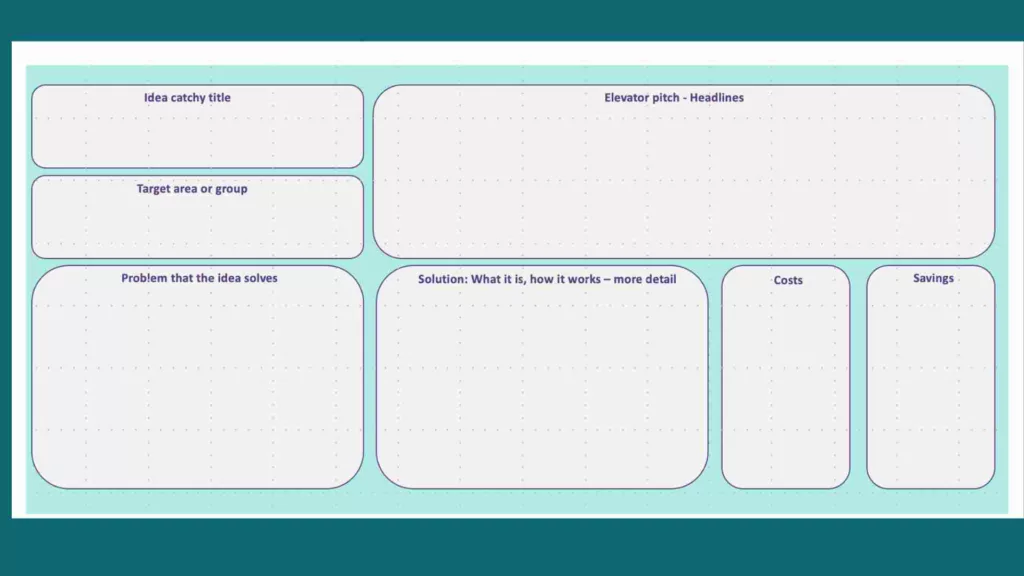
By following these steps, you’ll make sustainability an integral part of your business strategy, benefiting society, the environment and your bottom line.
More Advanced Tips for Business Sustainability Workshop Facilitators
Sustainability Project Design
Begin with a specific issue. For instance, if your audience primarily consists of local small businesses, address a pertinent topic, such as food waste, which can later be expanded to cover broader environmental issues.
Incorporate Case Studies
Enhance your sustainability program by offering participants a hands-on experience through the inclusion of case studies. Real-world examples can significantly improve the understanding of sustainability practices and their tangible effects.
Opt for a Series Approach
Rather than overwhelming participants in a short time, consider designing a sustainability workshop series. This format allows you to distribute essential topics, such as energy use, human resources, and economic challenges, across multiple sessions for better retention.
Virtual Workshops
For businesses with geographically dispersed teams, consider hosting virtual workshops. These save valuable time and resources, making them equally effective for knowledge dissemination.
Engage with Local Businesses
Promote community engagement by actively involving local businesses in your workshops. They can share their experiences, challenges, and innovative solutions, particularly in the context of environmental management and economic challenges.
Hands-on Experience with Local Initiatives
Promote team building and a deep understanding of sustainability by involving participants in a local sustainability project. Activities could range from practicing a zero-waste lifestyle, encouraging sustainable living, to participating in nature conservation initiatives.
Training Programs for Small Businesses
Recognize the unique challenges faced by small businesses. Tailor training programs to address their specific needs, emphasizing practical tools and new approaches that can help them integrate environmental protection with economic challenges.
Informal Conversations
Arrange informal conversations between participants and the company’s leadership team. These discussions can provide insights into the strategic direction and commitment to sustainability, including ESG (Environmental, Social, and Governance) efforts.
Human Resources & Sustainability
Delve into how the HR department can play a pivotal role in promoting sustainability practices. This includes recruiting for roles focused on tackling climate change and providing training for existing staff regarding the environmental impacts of their roles.
Innovate with Technology
Explore the benefits of electric vehicles for businesses aiming to reduce their carbon footprint. Additionally, investigate how digital tools can assist in measuring and reducing energy use.
Engage with the Community
Emphasize the importance of community engagement. Highlight that it’s not solely about environmental protection but also about improving the quality of life for everyone. Businesses play a pivotal role in mitigating the effects of climate change and enhancing the well-being of local communities.
Conservation and Business
Introduce nature conservation as a tool not only for environmental protection but also for addressing economic challenges. This concept intertwines with the goal of enhancing the quality of life for local communities.
Practical Tools for Assessment
Provide practical tools to assess environmental impacts, covering aspects from energy use to the advantages of transitioning to a zero-waste lifestyle. Tailor these tools to each business’s specific nature, as what works for one may not work for another.
Engage, Engage, Engage
Remember that the success of any sustainability workshop relies on community engagement. Foster spaces for informal conversations and maintain a keen focus on team-building sessions. The more engaged the participants, the better the outcomes.
Stay Updated
Acknowledge that the field of environmental management and sustainability is constantly evolving. Ensure your training program remains updated with the latest innovative solutions, especially as they relate to mitigating the effects of climate change.
Next Steps
The aim remains constant: to provide a comprehensive and engaging learning environment where participants depart with knowledge, a sense of purpose, practical tools, and the motivation to drive positive change. Whether it’s adopting electric vehicles, promoting a zero-waste lifestyle, or engaging in projects related to nature conservation, the ultimate goal is to champion sustainability practices that enhance the quality of life while safeguarding the environment.
Join Us on the Sustainability Journey
Are you ready to take your business to the next level of sustainability? The Big Bang Partnership is your trusted partner for designing and facilitating impactful business sustainability workshops and providing expert consultancy to innovate a more sustainable business model, products, and services.
Get in Touch with Us Today
I invite you to connect with us and explore the endless possibilities of sustainability. Me and my experienced team are eager to guide you through the sustainability transformation journey, tailored to your unique needs and goals.
Learn More with My Other Articles
For a deeper dive into the world of business sustainability and innovation, visit my articles:
Discover the insights and inspiration you need to drive positive change in your business. Let’s embark on this journey together for a brighter, more sustainable future. Get in touch today!

